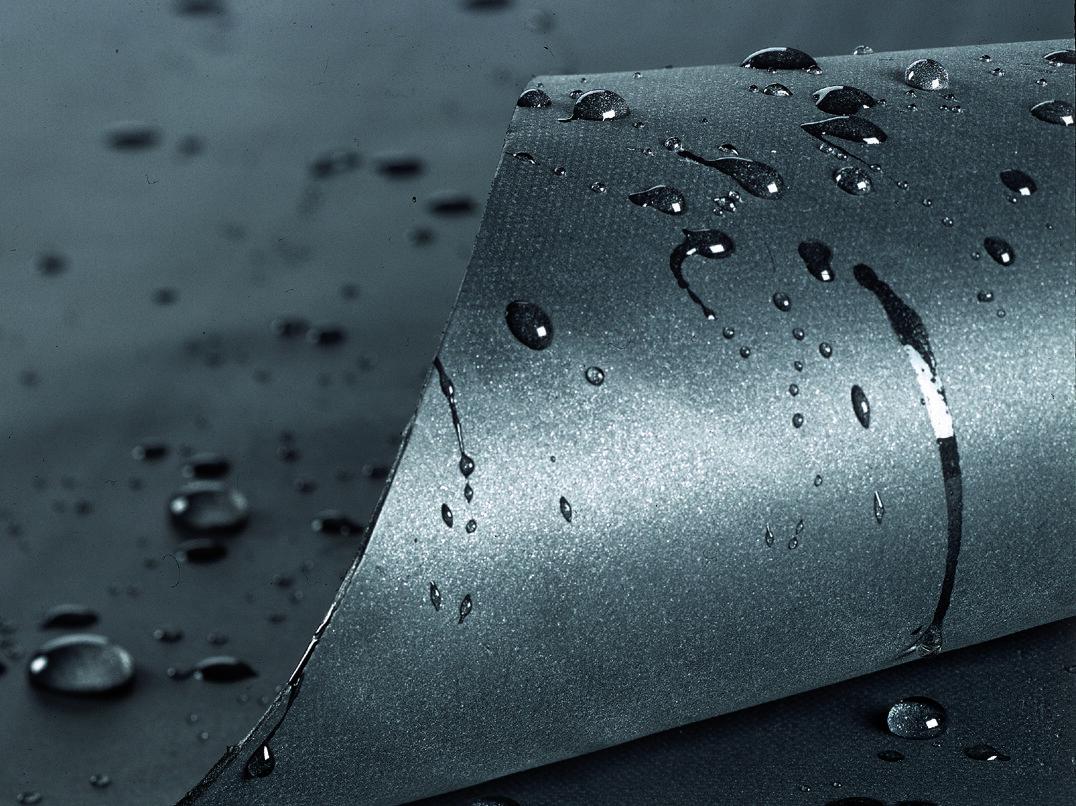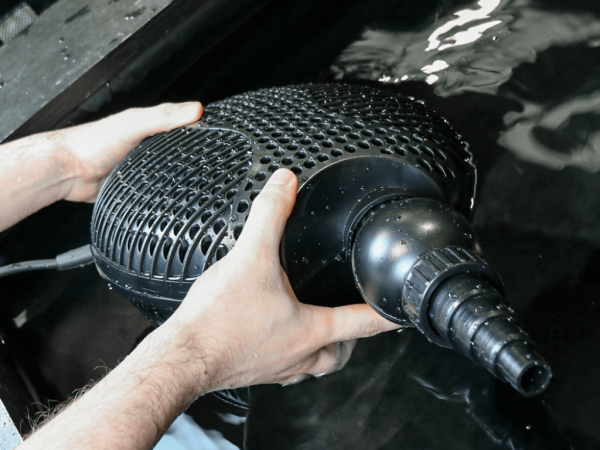How To Install Your New Pond Liner: A Step-By-Step Guide
Fitting a new pond liner is a daunting task for anyone, whether you're new to the pond keeping hobby or a seasoned veteran. That said, it needn't be difficult and provided you follow just a few simple steps you should have your new pond liner fitted and ready to hold water in no time at all!
What is a pond liner?
A pond liner is layer of impermeable material designed to form a barrier between the ground around a pond and the water inside. They’re made using a high-pressure, high-heat process that results in an elastic and chemically stable product. This is what makes pond liners easy to install and safe for housing fish and other aquatic life.
There are many sizes of garden pond liners to choose from, from small pond liners suitable for tiny nature-style ponds, to big pond liners suitable for large ornamental ponds full of fish, like Koi ponds. A large pond liner is often called a lake liner, because of its size. These are typically heavy duty liners designed to cover huge outdoor spaces, often in excess of 20m².
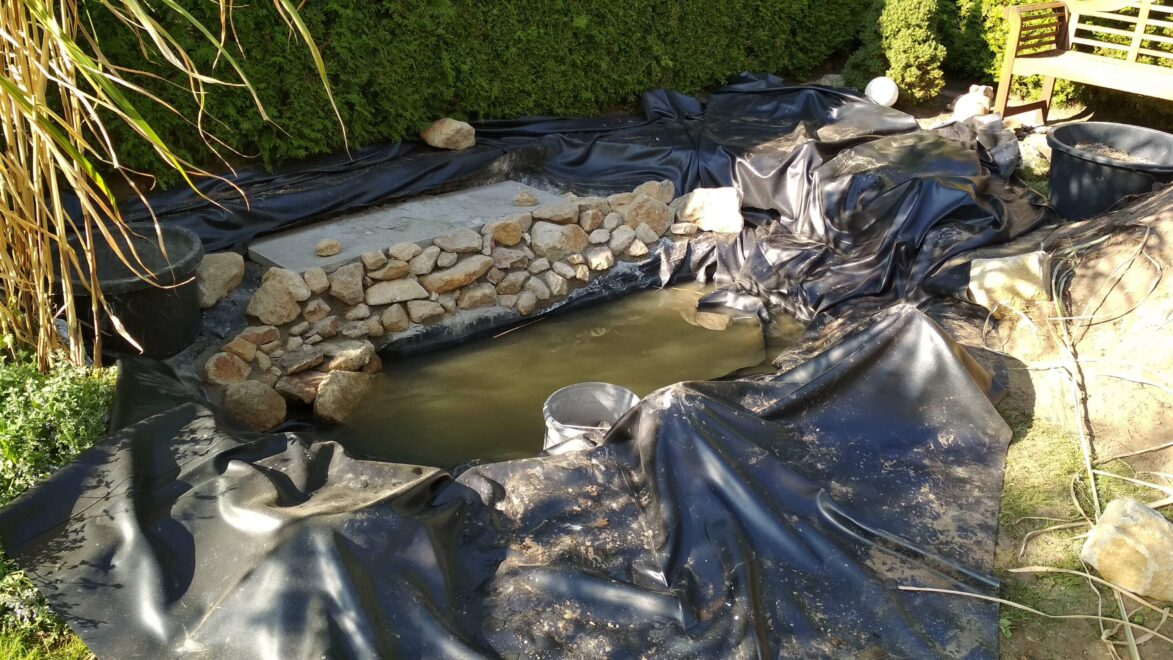
Not all garden ponds have pond liner foundations; some, like preformed ponds, rely on a plastic/carbon-fibre basin to retain pond water. These kinds of ponds may be attractive to new pond keepers for their simplicity, but they don't offer the amazing flexibility that pond liners do. They're also limited by their shape and size, with a maximum depth that cannot be changed. This rules out the use of some pond pumps, pond filters, and water features.
Just as they vary in size, pond liners vary in materials too. There are several different types of garden pond liners out there: HDPE pond liners, PVC pond liners, and EPDM pond liners, including rubber pond liners and butyl rubber pond liners. These are all quality pond liners, but they all have their individual pros and cons that make them suitable for different kinds of ponds. For a more detailed discussion surrounding these materials, check out our 'Everything You Need To Know About Swell UK Pond Liners' Help Guide here!
How do I install a new pond liner?
Step 1: Prepare the hole
First, prepare the hole that your pond liner is going to sit in by removing any sharp stones, tree roots, or anything that may puncture the pond liner. It's a good idea to look around the edges of the hole too and identify whether there are any fast-growing woody plants that may send out roots that'll puncture your pond liner in the future. If there are some of these plants around the hole, remove or relocate them.
Then, rake the surfaces of the hole to remove any remaining stones. It's easy to miss these smaller stones on a first pass, but they can be just as damaging as larger stones if left underneath your pond liner. To further protect your pond liner against punctures, you can fill any small holes with sand. This will stop your pond liner sagging into these holes where they're more at risk of punctures.
Step 2: install a layer of protective underlay
Before you fit your pond liner, you'll first need to install a layer of quality protective underlay. This is often some form of geotextile fabric and it acts as a barrier between the ground around your pond and your pond liner. It protects the pond liner from being punctured or scratched by sharp stones or twigs buried in the ground, and also prevents your pond liner from shifting due to any ground movement. They act as a layer of insulation too.
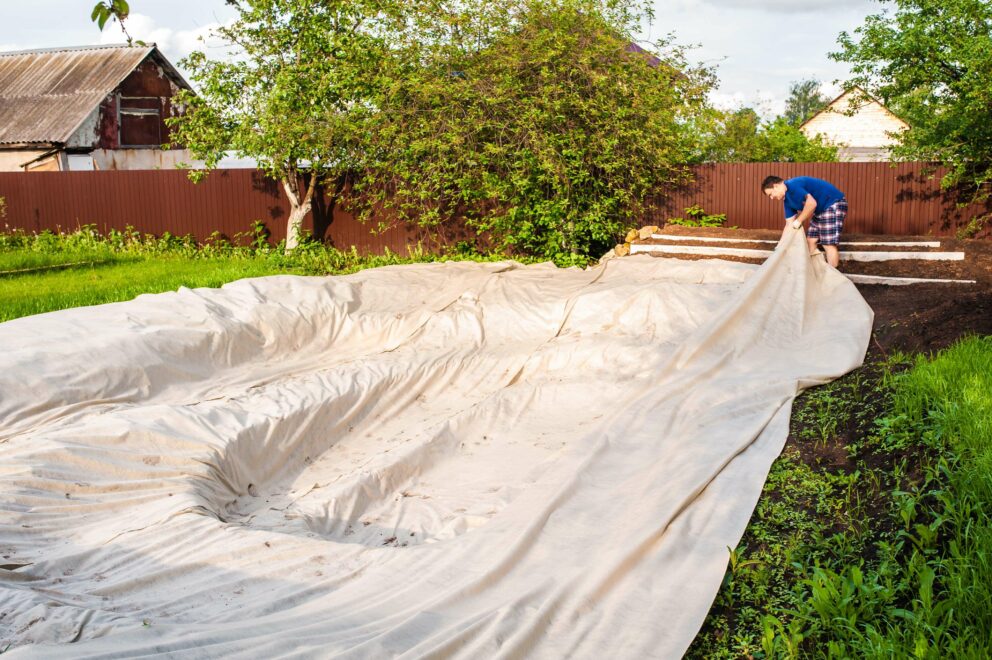
Some garden pond liners are more durable than others, but no matter what type you have, you should always partner your pond liner with a layer of protective underlay. Like pond liners, protective underlay is also available in a variety of sizes and types. Here at Swell UK we stock two types of protective underlay, heavy duty protective underlay or standard protective underlay, and both are available in sizes to fit our pond liners.
To install protective underlay, stretch it over the hole that will form your pond and weigh down the edges with some stones. Then, step into the pond and form the protective underlay around the contours of the hole. This part of the installation process doesn't have to be exact - it's your pond liner that holds water at the end of the day, not the protective underlay. Any spare protective underlay can be used to cover steep angles and stepped edges in the hole, and sticky tape can be used to hold everything in place.
Step 3: install your new pond liner
After you've prepared the hole and lined it with a layer of quality protective underlay, you're now ready to install your new pond liner. It's recommended that you wait for a dry, sunny day to install your new pond liner. This is because, as large pieces of black material, pond liners absorb sunlight, warm up, and become extra flexible.
Carefully unpack your pond liner and lay it out on a smooth, level area next to the hole. Then, with two or more people lift the pond liner like a bed sheet and lay it down, gently, into the hole. When moving your pond liner, always lift it rather than drag it as this will reduce the risk of punctures. There should be at least 30cm of pond liner overlap around the edges of the hole.
Then, take off your shoes and climb into the hole, forming the pond liner over the contours of the hole. Start in one spot and move around the hole systematically, folding the creases neatly. Once that part of the process is complete, climb out of the hole and, using a hose pipe, fill it with a few centimetres of water. This will weigh down the pond liner and ensure it's pushed into all the cracks and crevices inside the hole.
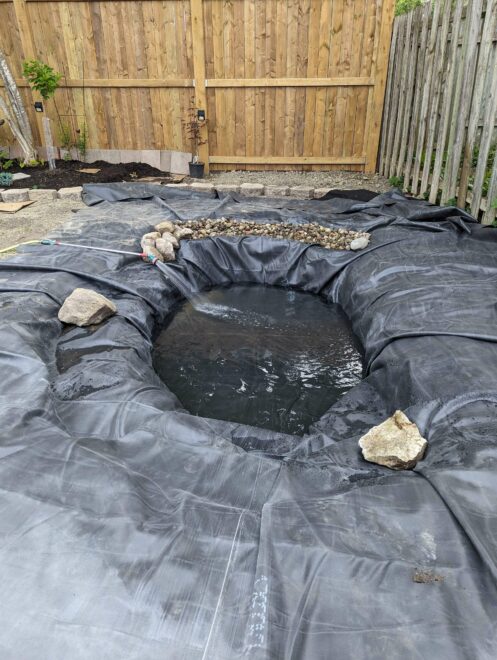
It's a good idea to remove any creases before you add more water. To do so, pull the pond liner in every direction until any remaining creases disappear. Then, weigh down the edges of the pond liner at ground level with rocks to keep the liner taught. You can then fill up the hole until the water level is about 5cm below the ground around the hole
Step 4: trim off any excess
If you've followed the above steps correctly, you should have at least 30cm (preferably more) of protective underlay and pond liner overlapping the edges of the hole. Using a pair of sharp scissors or a craft knife, trim off this excess to make a neat, 30cm overlap around the edges of the hole. You can then cover this overlap with turf, landscaping rocks, or pond liner edging to further tidy the area around the hole. A perfectly lined pond will have hardly any pond liner showing once filled.
How to fit a pond liner in a raised pond
If you have a raised pond the same measures can be applied as for a ground level garden pond, detailed above. Use pond specific underlay to line the pond first, then carefully manoeuvre and lay your pond liner on top. For timber-framed ponds, pull the pond liner tight around all the edges, then screw down wooden capping on top and trim the overlap underneath the capping for a neat-looking, timber-framed pond.
How to fix a hole in a pond liner
When fitting a pond liner, accidents can happen and you may puncture or slash your pond liner. Thankfully, punctures or slashes can be easily fixed with some pond liner repair tape and a patch - you can use a specialist patch or just a spare piece of pond liner cut from your pond liner overlap. Some patches are designed to work with different types of pond liners, but all types of pond liners - HDPE, PVC, and EPDM (including standard rubber pond liners and butyl rubber pond liners) - can be repaired.
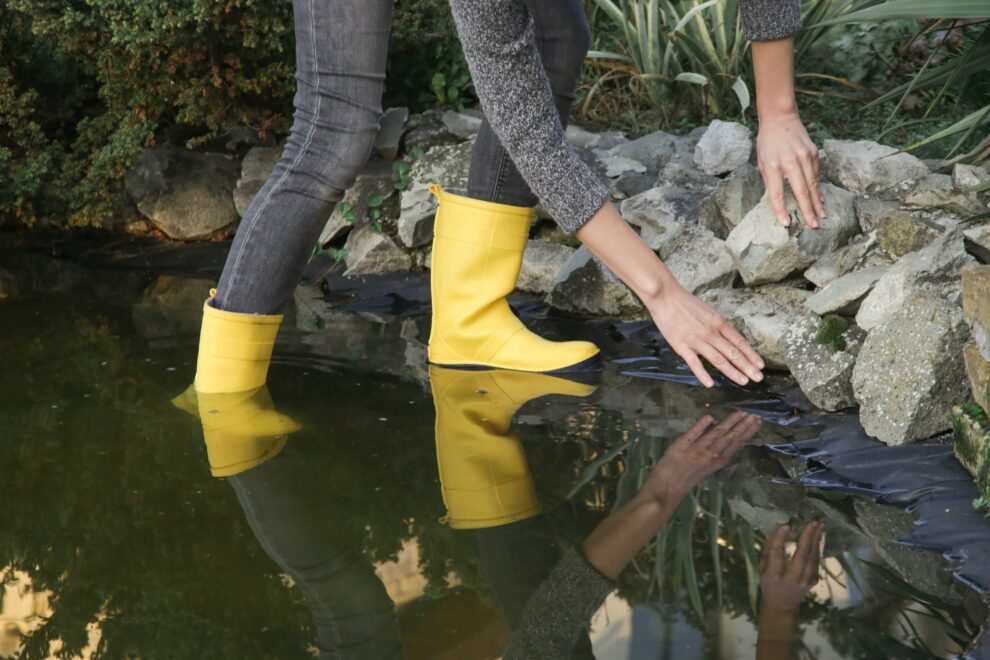
How to pick the right sized pond liner
Selecting the right sized pond liner for your pond is usually quite tough, but with our handy pond liner calculator tool it's made quick and easy. Just measure your pond's length, width, and depth, and input the details into the pond liner calculator.
After a speedy calculation, the pond liner calculator will tell you how much pond water your pond will hold and the minimum size pond liner you'll need to sufficiently cover the base of your pond, whether that be for a small pond or a large pond. It'll also tell you the minimum size protective underlay you'll need.




